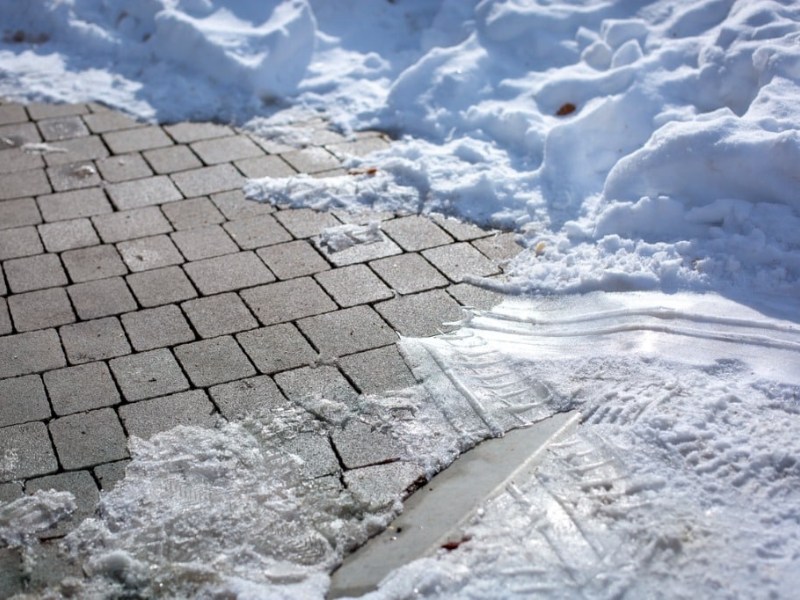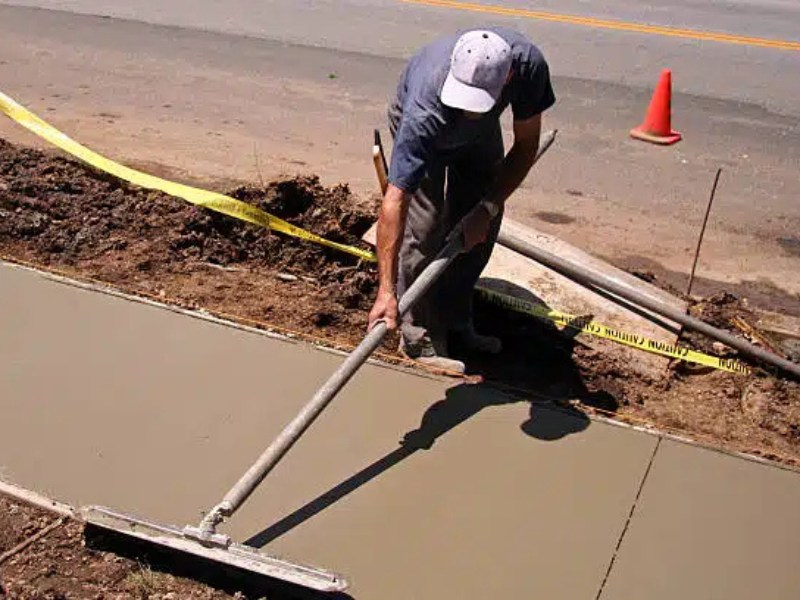Sidewalks are the arteries of New York City, and they guide millions of pedestrians safely through one of the busiest urban environments in the world. Sidewalks are a crucial part of everyday life, from tourists exploring iconic landmarks to residents commuting to work. But like any infrastructure, they wear down over time, and when sidewalks deteriorate, they cause hazards, reduce accessibility, and reflect poorly on the city’s vibrancy. So, understanding the primary reasons for sidewalk deterioration can guide us to take proactive measures to manage them and make public safety sure.
Primary Reasons For Sidewalk Deterioration in New York City
1. Harsh Weather Condition: The Freeze-Thaw Cycle

The brutal winters in New York City are both tough for its people, and they are also hard on sidewalks. The continuous freezing and thawing cycles create water seeping into the tiny cracks in sidewalk materials, maximize when frozen, and break apart the surface. This process repeats again and again during winter and makes a network of cracks and weak points that eventually crumble.
When snow and ice add to the equation, the problem intensifies. Heavy snowfall accumulates, and when they start melting, they seep into the pavement and cause more cracking. Road salt that is used for de-icing also takes a toll and accelerates erosion, causing the materials to further weaken.
2. Heavy Foot Traffic and Load: New York Never Sleeps, Nor Do Its Sidewalks.

The sidewalks of New York are always busy. These concrete pathways endure continuous pressure from commuters hustling during rush hour to delivery trucks pulling up onto curbs. The sheer volume of daily use rapidly wears down even the toughest materials in heavily trafficked areas like Midtown Manhattan. This unrelenting pressure can create significant cracks, crumbling, and depressions.
In those areas, where vehicles cross onto sidewalks daily, like loading zones, the problem becomes more spoiled. Sidewalks are not built to bear the same pressure as roads, which means the extra load from trucks and bikes can cause accelerated wear and tear.
3. Tree Roots Growth: Nature vs. Sidewalks

As trees bring much-needed greenery to the city, their roots often wage a silent conflict against sidewalks. While tree roots keep growing, they push up and crack the pavement above and make the slabs uneven that are both unsightly and dangerous for pedestrians. In many neighborhoods, the uplifting of sidewalk panels because of expanding roots is one of the most ordinary reasons for sidewalk damage.
The tricky part is that repairing these sidewalks mostly needs working around or even with the roots to avoid destroying the tree, which makes these repairs extremely challenging.
4. Construction and Utility Work: Collateral Damage

New York City is always under various construction, like building site, roadwork, or infrastructure upgrades happening all year-round. While these projects are crucial for the city’s overall development, they often have unintended side effects on nearby sidewalks. Vibrations from the construction, heavy machinery, or poor restoration work after a beneficial repair can make sidewalks cracked, uneven, or destabilized.
Underground utility installations can cause weakening sidewalks, particularly when contractors dig into the pavement to access gas lines, water mains, or fiber optic cables. When the job isn’t properly restored, the sidewalks might be left vulnerable to future deterioration.
5. Poor Installation and Materials: Cutting Corners Comes at a Cost

All sidewalks are not created equally. When low-quality materials are used or sidewalks are installed without enough preparation, they can deteriorate so fast. Moreover, shortcuts like using inferior materials or rushing the process during repairs can cause sidewalks that fail to resist the test of time.
Often, what comes into sight as a rapid fix is merely a patch that barely lasts for a season and leads to recurring problems and enhanced maintenance expenses for property owners and the city.
6. Aging Infrastructure: Time Takes Its Toll

New York’s sidewalks are old like many parts of the city. The materials have easily reached the end of their lifespan in areas where sidewalks haven’t been upgraded for years or decades. So, natural wear and tear start to take their toll. Sidewalks that have withstood years of heavy use, harsh weather, and minimal repairs eventually start to break down and become safety hazards.
Aging sidewalks mostly fail to meet the latest durability standards and make them more susceptible to the ingredients and regular wear and tear.
7. Lack of Timely Maintenance: Minor Cracks Can Become Major Hazards.

One of the largest contributors to deteriorating sidewalks is the failure to identify minor cracks before they turn into major hazards. What begins as a small crack can grow into a great fracture or hole so fast if left unattended. Delayed or improper repairs only intensify the situation and make the eventual fix far more costly and labor-intensive.
In most cases, municipal or property owners fail to look after playing a role. While the city can be responsible for some sidewalks, property owners are mostly responsible for the sidewalks close to their buildings. If required repairs are delayed, sidewalks may become liabilities and lead to potential lawsuits from injuries due to tripping hazards.
How to prevent sidewalk damage and save on expensive repairs?
The good news is that proactive steps can guide, reduce, and prevent sidewalk damage and save on expensive repairs. Property owners and businesses should come forward to invest in regular sidewalk maintenance, identifying cracks and uneven slabs before they become safety issues. New York City also provides sidewalk repair programs to help property owners maintain safe pathways.
Moreover, opting for high-quality materials and proper installation techniques during repairs can maximize the life of sidewalks and make the need for frequent fixes smaller. Protecting sidewalks from construction damage, tree roots, and heavy traffic pressure can also go a long way in preserving their integrity.
Learn More: How Can Structural Shifts Wreck Your Brick Pointing in Brooklyn?
Conclusion
Investing in sidewalk care is not just about aesthetics; it’s about safety, accessibility, and preserving the city’s infrastructure. Property owners, businesses, and the city itself all have a role to play in keeping these pathways safe and durable. We can ensure that New York’s sidewalks remain a strong and stable foundation for years to come by identifying the major causes of sidewalk deterioration and taking necessary steps to prevent further damage.
Take necessary action now! Report sidewalk damage, schedule repair as needed, and keep your property safe for all who walk by!

